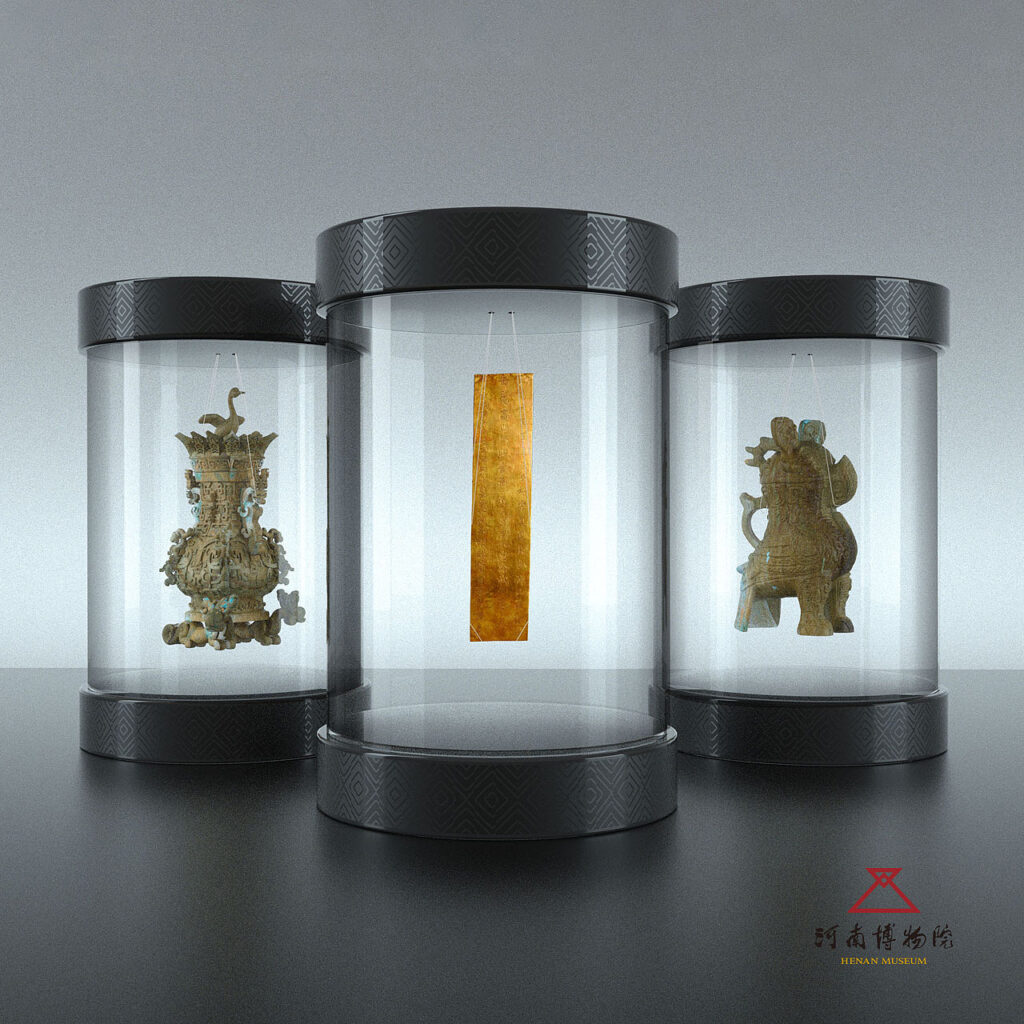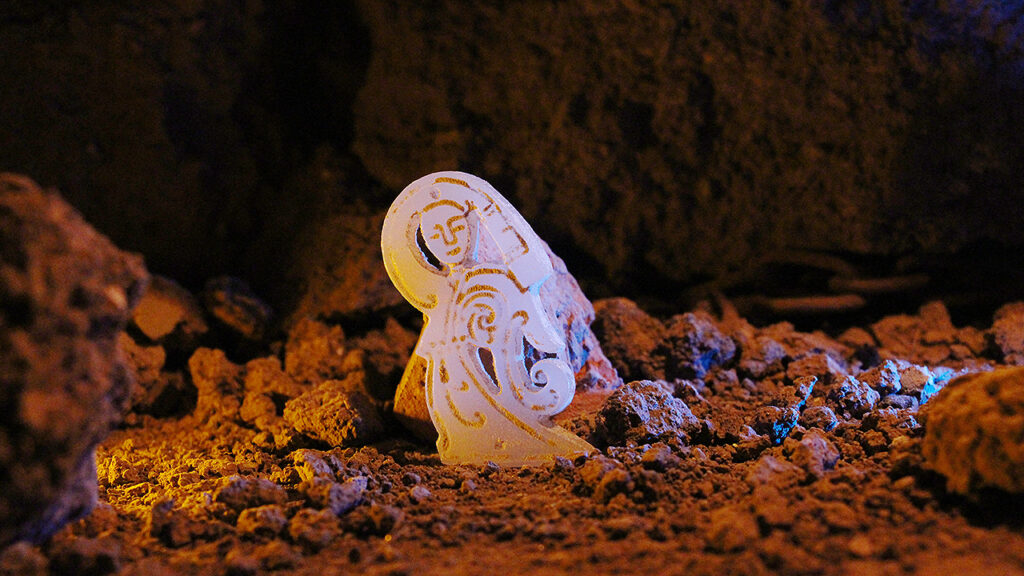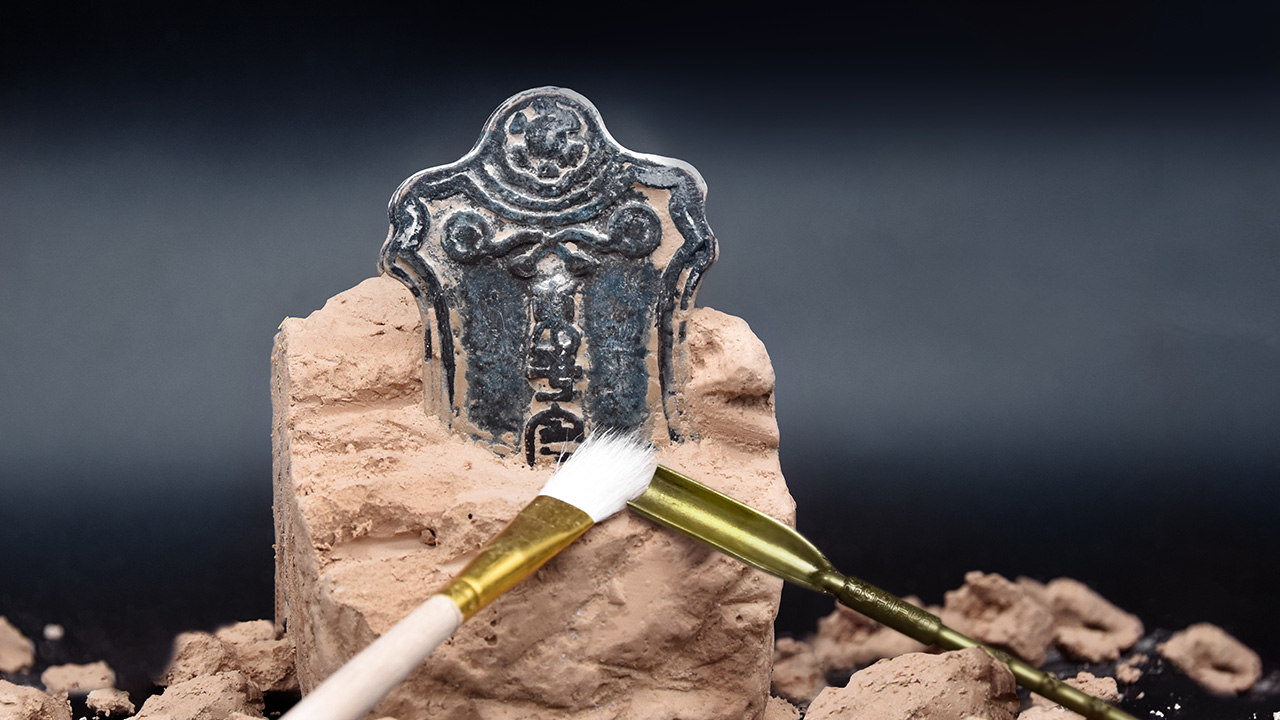Digging through dirt in pursuit of hidden treasure is a pastime enjoyed by children the world over. In China, nostalgia for that age of whimsical adventure, together with flourishing interest in traditional heritage, has spawned the country’s trendiest cultural product: archaeological blind boxes created by museums.
First popularized by China’s art toy companies, most notably POP MART, blind boxes are opaquely packaged collectibles with mass appeal among post-’90s and post-’00s consumers whose unboxing videos have become a veritable social media sub-genre. The museum variety entombs a replica artifact in a clump of clay and packages them alongside miniaturized archaeological instruments required for excavation — sometimes even white gloves are included.

An unboxing video featuring Henan Museum’s archaeological blind boxes. Images: 吃货小伟 on YouTube
Demand for museum blind boxes hit new heights over November’s e-commerce shopping bonanza, Double 11, which overall saw more than 100 cultural institutions grow product sales 400 percent year-on-year on Alibaba’s Tmall. Leading blind box purveyors include Suzhou Museum, Sanxingdui Museum in Sichuan province, and the home of the Terracotta Army, Emperor Qin Shihuang’s Mausoleum Site Museum, but the king is arguably Henan Museum, which has generated $4.7 million in blind box sales over the past 11 months.
“Henan Museum has a rich collection with many stories and we understand the need to deliver them in innovative ways,” Song Hua, the Director of the Museum’s Cultural Creativity Office, tells Jing Culture & Commerce. “The blind box can pique the curiosity of young people and become a first step for exploring ancient culture.”
The nearly 100 blind boxes released by the museum since December 2020 include replica Zhou Dynasty bronze bells and ritual vessels, two-millennia-old jade figurines, and neolithic flutes — products Song believes have found a devoted following of repeat buyers due to the fun of an archaeological unboxing and the depth of historical information provided by the museum.

In the past year, Henan Museum has released close to 100 blind boxes containing replicas from bronze bells to jade figurines. Image: Henan Museum
Equally important has been the museum’s extensive research on the preferences of consumers and the young cohort of employees inside the Cultural Creativity Office who understand market trends intimately. “We have adopted new ways of approaching them,” Song says. “We connect trendy topics with our museum. Hopefully, people find that the museum can also be cool.”
Henan Museum’s exploration of hip cultural products, or wenchuang as it’s known in China, has dovetailed with a rapid adoption of digital technologies, one first necessitated by the pandemic but further developed to deepen connections with young consumers. It has digitized much of its back catalogue of exhibitions, is present on all major social media and e-commerce platforms, and hosts weekly livestreams on Taobao. One initiative neatly encapsulating the museum’s new embrace of both technology and wenchuang is its partnership with Alipay, Alibaba’s mobile payment app, to create virtual blind boxes.
Ahead of October’s week-long National Day holiday, the two released digital versions of the museum’s blind boxes on its Alipay Mini Program, a non-downloadable applet inside Alipay. Users can apply virtual picks and brushes to unearth artifacts from Henan’s collection before purchasing a physical blind box in a couple of taps. As with Henan’s previous creations, it proved something of a sensation, receiving six million visitors during its first month in action.

In Henan Museum’s partnership with Alipay, the institution’s blind boxes can be virtually unlocked or purchased on its Alipay Mini Program. Image: Henan Museum
More than 2,000 Chinese museums have already established an Alipay Mini Program to offer visitors everything from pre-arrival ticket booking to onsite directions to post-visit souvenir purchasing, but Henan Museum creating an archaeological game in the Basement section of the app is more ambitious than most.
“The idea to collaborate and pilot a fun new interaction came from a meeting with the museum on digitization,” says Nicole Wang, a digital solutions expert at Alipay. “They are interested in leveraging innovative solutions to engage young audiences and popularize art, and Alipay has rich experience facilitating the digitalization of brands over years.”
Following the commercial success the museum has enjoyed over the past year, is it worried about maintaining a balance with its basic mission? Song doesn’t see a need to strongly differentiate between the museum’s “social benefits and responsibilities” and catering to the market for cultural products. “The products are founded on real culture. We use them as a carrier [of culture] to serve museum enthusiasts better,” Song says. “By collecting them, they can learn more about relics, history, and traditional culture.”



